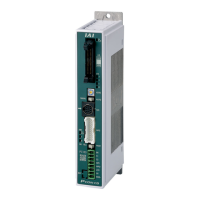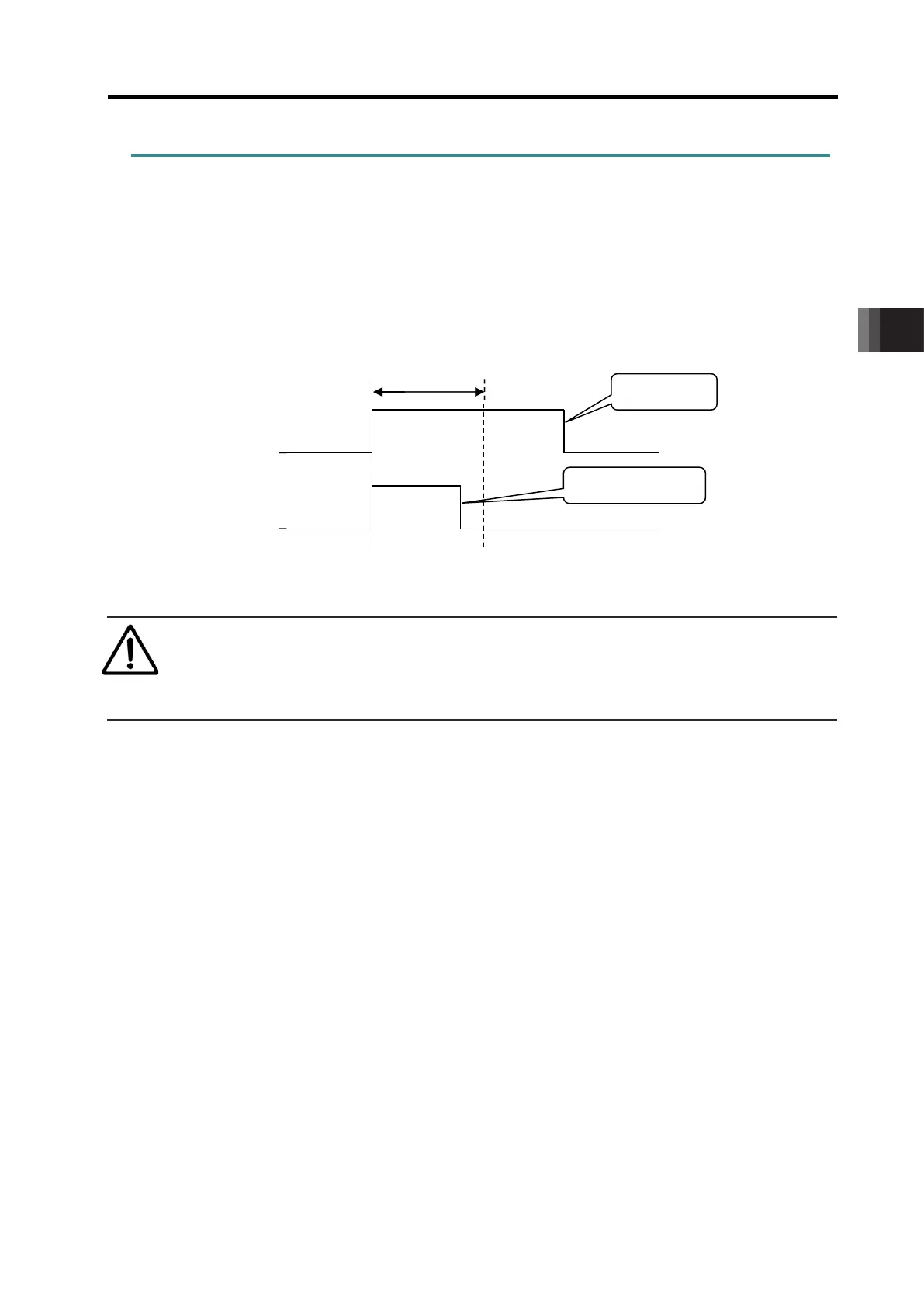4. Operation
4.3 Pulse Train Control Mode
4-102
ME0342-4B
■ Main Functions
1 Dedicated home return signal
When this function (signal) is used, home return can
be performed without using a complex sequence or
2 Brake control function
Since the controller controls the brake, there is no
need to program a separate sequence.
The electromagnetic brake power is supplied to the
controller from a power supply different from the
main power. Accordingly, the electromagnetic brake
can be released freely after the main power has
3 Torque limiting function
The torque can be limited (a desired limit can be set
by a parameter) using an external signal. When the
torque reaches the specified level, a signal will be
output. This function (signal) permits pressing and
press fitting operations.
4
Position-command primary filter
function
Soft start and stop can be achieved even when the
actuator is operated in the command-pulse input
mode where acceleration and deceleration are not
5
Resistration of datum position
PIO Pattern 7: Dedicated for
absolute type
Operation is available with the datum position set up
at any position in the movable range of the actuator.
4.3 Pulse Train Control Mode
ME0342-4B 4-103
4.3.1 I/O Signal Controls
The input signals in this controller are equipped with the input time constant for 6ms in order to
prevent error operation caused by chattering or noise.
Therefore, it is necessary to input each input signal for 6ms or more
(Note 1)
. A signal with 6ms or
less will not be identified.
Note 1 Command pulse train inputs (PP, /PP, NP, /NP) do not have input time constants.
Also, it is necessary to input 16ms or more for CSTP Signal.
Caution
● To use I/O signals, be sure to tilt the operation mode setting switch on the front panel of
the controller to the “AUTO” position.
Input Signal
Input Signal
Identify
Does not identify
6ms

